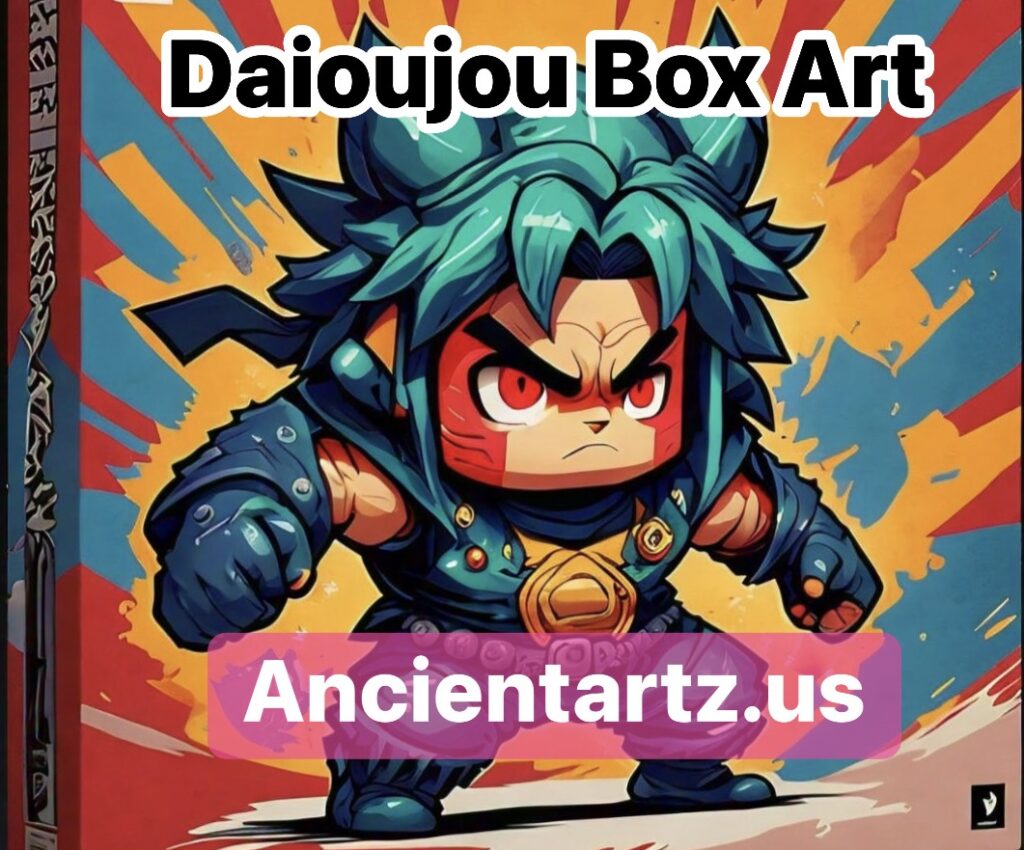Daioujou, a classic arcade game released in the late ’90s, stands out not just for its intense gameplay but also for its captivating box art. This Daioujou Box Art article delves into the significance of the box art, its design elements, and its role in the gaming culture. We’ll explore how the visuals encapsulate the essence of the game and reflect the era in which it was created.
The Importance of Box Art
Box art serves as the first impression for players. It communicates the game’s theme, setting the tone for the gaming experience. For Daioujou, the box art is not merely decorative; it captures the essence of what players can expect.
Visual Appeal: The bright colors and intricate designs draw players in, promising excitement and adventure.
Theme Representation: The artwork encapsulates the game’s storyline and characters, giving players a glimpse of the challenges they will face.
The Artistic Style of Daioujou Box Art
Daioujou’s box art features a distinctive style that reflects the game’s intense action and intricate graphics. The artwork showcases a blend of traditional and modern design elements, creating a unique visual identity.
Character Design: The characters depicted on the box art are vibrant and dynamic, mirroring their in-game appearances. Their poses suggest movement, evoking the fast-paced nature of the gameplay.
Color Palette: The use of bold colors creates a striking contrast, enhancing the visual impact. The palette not only attracts attention but also reflects the emotional tone of the game.
Historical Context
To fully appreciate the Daioujou box art, it’s essential to understand the historical context of its creation. Released during the late 1990s, the game emerged at a time when the arcade scene was booming. Players sought new and engaging experiences, and Daioujou Box Art, the visual presentation became a crucial factor in a game’s success.
Influence of Japanese Culture: The art reflects elements of Japanese culture, particularly in character design and thematic choices. This cultural touch adds depth to the game and resonates with players familiar with these themes.
Technological Advancements: The late ’90s saw significant advancements in graphic design. Artists were experimenting with new techniques, allowing for more detailed and expressive artwork.
Analyzing the Design Elements
The box art for Daioujou is a masterpiece of design, with several key elements working together to create a cohesive visual experience.
Composition: The arrangement of characters and backgrounds draws the viewer’s eye. The focal points are strategically placed to guide the viewer’s gaze across the artwork, creating a narrative flow.
Typography: The font choices for the title and any accompanying text are carefully selected to complement the overall design. The typography reflects the game’s style, enhancing the theme and mood.
Impact on Gaming Culture
Box art often transcends its role as a mere packaging element. It can become an icon within gaming culture, sparking discussions and nostalgia among fans.
Collectibility: Many gamers view box art as collectible items. The aesthetic appeal of Daioujou’s box art has led to a demand for physical copies among enthusiasts.
Fan Interpretations: The artwork inspires fan creations, from illustrations to merchandise. These interpretations showcase the lasting influence of the original design.
The Evolution of Box Art
Over the years, the design of box art has evolved alongside the gaming industry. As technology improved, so did the quality of graphics and design.
From 2D to 3D: Early box art often featured simplistic, hand-drawn designs. In contrast, modern box art embraces 3D graphics, offering a more immersive experience.
Digital Distribution: With the rise of digital gaming, the relevance of physical box art has diminished, yet its influence remains strong in promotional materials and online storefronts.
Legacy of Daioujou Box Art
The legacy of Daioujou’s box art continues to resonate with gamers today. It serves as a reminder of the golden age of arcade gaming and the artistry that went into creating engaging experiences.
Nostalgia Factor: For many players, the artwork evokes fond memories of their time spent in arcades, making it a cherished piece of their gaming history.
Inspiration for New Generations: The design continues to inspire new artists and game developers, highlighting the importance of visual storytelling in the gaming industry.
Conclusion
In summary, the Daioujou box art is a remarkable example of how visual design can enhance the gaming experience. Its artistic elements, historical context, and cultural significance Daioujou Box Art make it an essential part of the game’s identity. As the gaming landscape continues to evolve, the impact of such artwork remains significant, inspiring future generations of players and creators alike.


